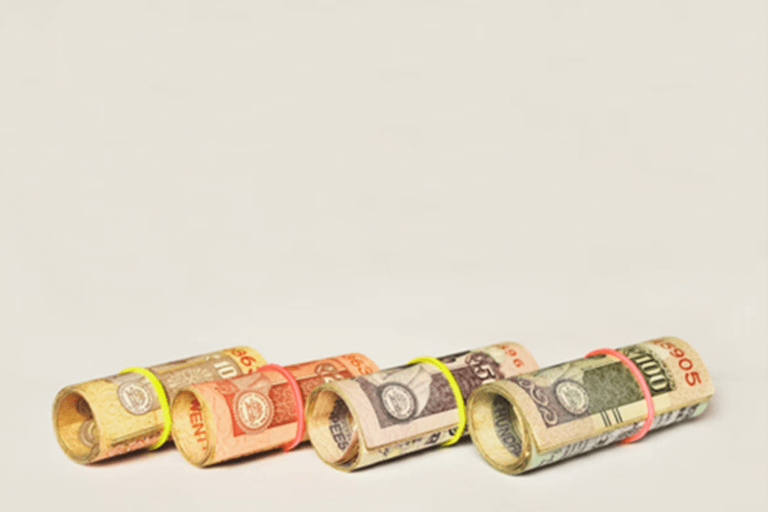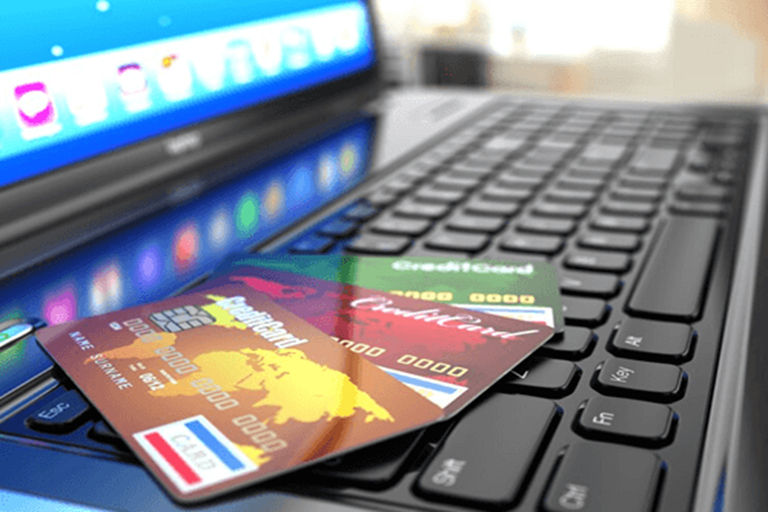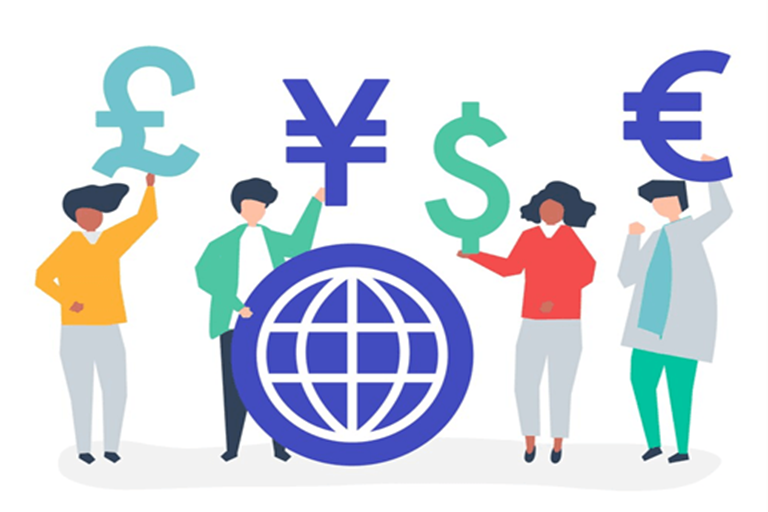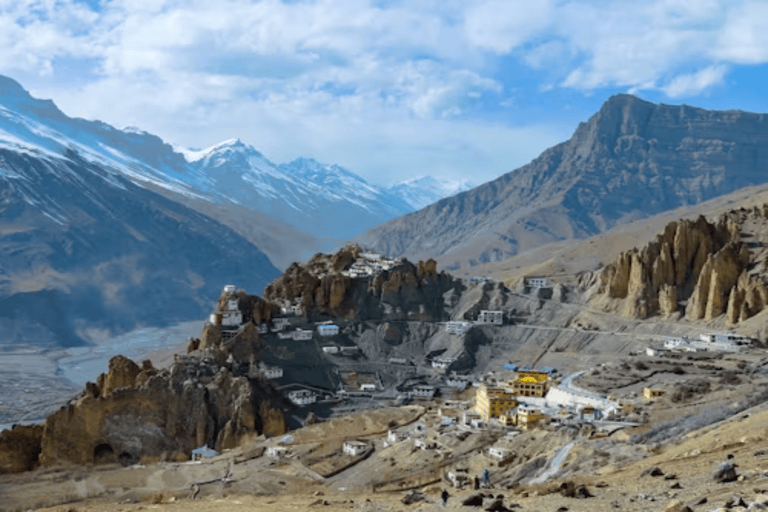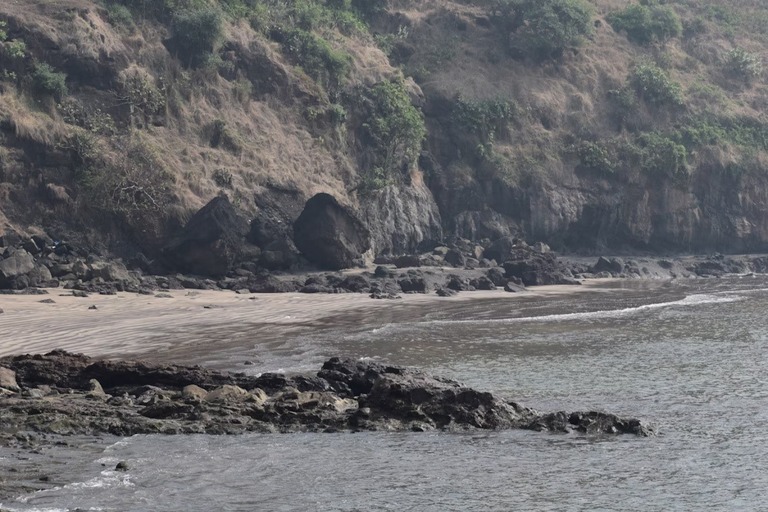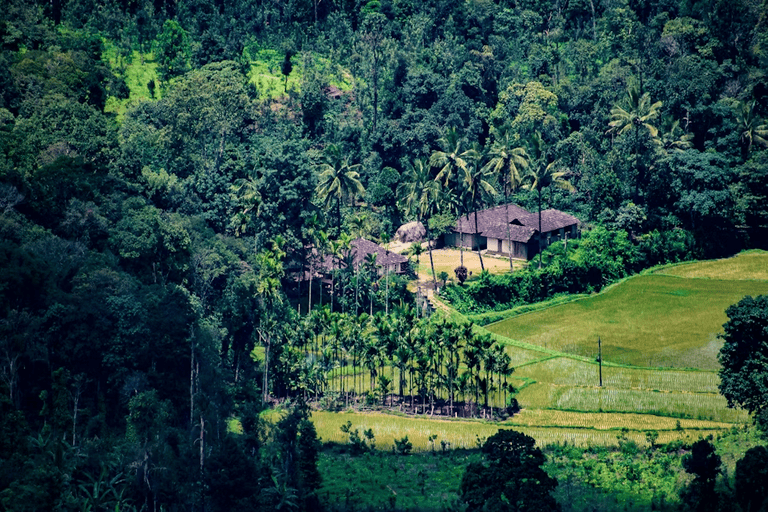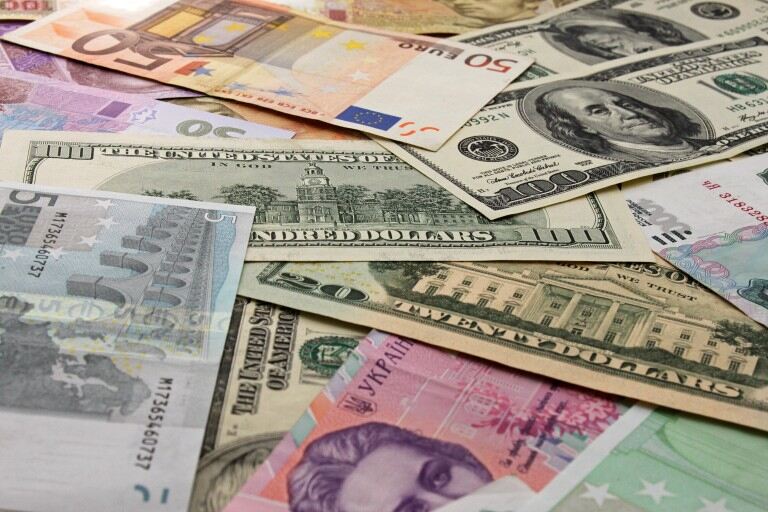
Lowest Currencies in the World with Exchange Rates in INR
Table of contents
As you plan your travels or delve into the economics of different countries, understanding currency values becomes crucial. The phrase ‘currencies with the lowest exchange rates in the world’ often piques curiosity, both for economic insights and the travel opportunities it presents.
This article explores countries with the lowest currency exchange rates in the world compared to the Indian Rupee (INR), offering you a unique perspective on how far your rupee can stretch abroad.
How Do Currency Exchange Rates Work?
Currency exchange rates determine how much one country’s currency is worth in terms of another. Exchange rates fluctuate based on various economic factors, such as demand and supply, inflation rates, interest rates, geopolitical stability, and overall economic health.
There are two main types of exchange rates: fixed (pegged) and floating. Fixed rates are set by governments and central banks; for instance, some countries peg their currency to the US dollar to maintain stability. Floating rates, on the other hand, fluctuate freely in the foreign exchange (forex) market based on market dynamics.
In the forex market, the rate of a currency is influenced by supply and demand. If a currency is in high demand due to strong economic indicators, its value rises. Central banks also influence rates through monetary policy—adjusting interest rates to either strengthen or weaken a currency.
Additionally, exchange rates can vary between different providers. Banks, money changers, and online platforms all add a margin or fee to the base exchange rate to make a profit, which is why comparing rates is important to get the best deal when exchanging currency.
Top 10 Lowest-Valued Currencies in the World and Their Exchange Rates in India
Here’s a list of the ten lowest-valued currencies in the world with their exchange rates in INR. The values may fluctuate, so the exchange rates mentioned are approximate:
1. Iranian Rial (IRR)

The Iranian Rial (IRR) is one of the weakest currencies globally due to economic sanctions, political instability, and inflation. Currently, 1 Iranian Rial is approximately equal to 0.002 INR.
Iran has faced significant international sanctions, which have heavily impacted its economy and currency valuation. Hyperinflation and a struggling economy have resulted in the Rial’s low value, which means that even basic daily expenses are conducted with massive amounts of cash.
The Iranian government has recently taken steps to replace the Rial with the Toman, which will be worth ten Rials, as an attempt to simplify the currency and combat hyperinflation. Despite its low value, Iran’s economy still manages to sustain domestic transactions effectively by using large denominations.
2. Vietnamese Dong (VND)

The Vietnamese Dong (VND) is another currency with a very low value compared to the Indian Rupee. 1 Vietnamese Dong is approximately equal to 0.0034 INR.
Vietnam has a rapidly growing economy, yet its currency remains among the lowest in value worldwide due to past economic issues and efforts to remain competitive for exports. The government’s strategy has kept the Dong weak to attract foreign investments, making Vietnam an attractive market for outsourcing and manufacturing.
This low valuation of the currency helps boost the country’s exports, as it makes Vietnamese goods cheaper on the global market. Despite its value, Vietnam’s cost of living is relatively low, which allows citizens to maintain a good standard of living with the local currency.
3. Indonesian Rupiah (IDR)

The Indonesian Rupiah (IDR) is another currency with a low value. 1 Indonesian Rupiah is approximately equal to 0.0054 INR.
Indonesia’s large population, political and economic challenges, and efforts to maintain competitiveness in global markets have all contributed to the Rupiah’s lower valuation. Indonesia’s government has implemented numerous policies to stabilise the Rupiah, but it remains weak compared to other regional currencies.
The country’s dependence on imported goods and fluctuating commodity prices, such as crude oil, have also impacted the currency’s strength. Despite the Rupiah’s low value, Indonesia has shown considerable economic resilience and growth, especially in sectors like tourism and natural resources, contributing significantly to Southeast Asia’s overall economic dynamism.
4. Guinean Franc (GNF)

The Guinean Franc (GNF) is the currency of Guinea in West Africa. 1 Guinean Franc is approximately equal to 0.0097 INR.
Guinea has faced numerous economic challenges, including political instability and fluctuating commodity prices, which have affected its currency valuation. The country is rich in natural resources, particularly bauxite and iron ore, but widespread poverty and limited infrastructure development have kept the Franc weak.
Inflation and weak governance also play a role in the currency’s low value. While Guinea’s mining sector contributes significantly to its GDP, the benefits are not always reflected in the currency’s value. This low currency value often leads to a high cost of living for imported goods, affecting the daily lives of citizens.
5. Lao Kip (LAK)

The Lao Kip (LAK) is the official currency of Laos, and 1 Lao Kip is approximately equal to 0.0038 INR.
The Lao Kip is among the lowest-valued currencies due to the country’s underdeveloped economy and its dependence on agriculture and hydropower. Laos is a landlocked country with limited infrastructure, which has hindered economic growth.
Tourism is an essential contributor to the economy, but the Kip’s low valuation means that Laos remains an affordable destination for travellers. Despite the low value of the Kip, Laos has managed to sustain economic growth, largely thanks to investments from neighbouring countries like China, Vietnam, and Thailand, which have invested in infrastructure and hydroelectric projects, offering potential for future economic improvements.
6. Paraguayan Guarani (PYG)

The Paraguayan Guarani (PYG) is the currency of Paraguay, and 1 Paraguayan Guarani is approximately equal to 0.011 INR.
Paraguay is an agriculture-based economy, with significant portions of its GDP coming from soybean and beef exports. Despite having a relatively stable economy, Paraguay’s currency is undervalued, which helps to maintain its competitiveness in agricultural exports.
The Guarani has a low value because of high inflation, past economic mismanagement, and the country’s efforts to remain competitive in the South American market. Paraguay is rich in natural resources, and hydroelectric power is a significant contributor to the economy. However, the overall development and infrastructure limitations have kept the Guarani at a low valuation compared to other currencies in the region.
7. Uzbekistani Som (UZS)

The Uzbekistani Som (UZS) is another low-valued currency, with 1 Som being approximately equal to 0.0066 INR.
Uzbekistan’s economic challenges, including high inflation rates, limited diversification, and heavy reliance on exports like cotton and gold, have contributed to the Som’s low value. The government has been taking steps towards economic liberalization, which includes currency reforms to stabilize the Som.
The country was largely isolated under previous leadership, and the controlled economy stifled growth, which affected the currency valuation. Since gaining independence from the Soviet Union, Uzbekistan has seen some reforms, and tourism has increased due to relaxed visa regulations, but the Som’s value remains low in comparison to global standards.
8. Sierra Leonean Leone (SLL)

The Sierra Leonean Leone (SLL) is the currency of Sierra Leone, with 1 Leone approximately equal to 0.004007 INR.
Sierra Leone has been affected by a history of civil war, political instability, and the Ebola epidemic, which have all contributed to the devaluation of its currency. Despite being rich in natural resources such as diamonds and gold, Sierra Leone remains economically challenged.
Corruption and underdeveloped infrastructure also hinder the country’s growth, keeping the Leone’s value low. Recent government reforms have aimed at stabilizing the economy, but challenges remain. The Leone’s low valuation significantly affects daily life, making imported goods expensive and limiting access to global markets.
9. Congolese Franc (CDF)

The Congolese Franc (CDF) is the currency of the Democratic Republic of Congo, with 1 Congolese Franc being approximately equal to 0.029 INR.
The DRC is one of the wealthiest countries in terms of natural resources, including minerals like cobalt and diamonds, yet its currency remains weak due to ongoing conflict, political instability, and corruption. Decades of instability and poor governance have severely weakened the Congolese Franc, leading to high inflation rates.
Despite the DRC’s immense potential for wealth, its citizens often face severe poverty and economic hardship, with limited access to basic services. The country’s reliance on exports for foreign exchange also means that fluctuations in commodity prices directly impact the value of the currency.
10. Iraqi Dinar (IQD)

The Iraqi Dinar (IQD) is the official currency of Iraq, and 1 Iraqi Dinar is approximately equal to 0.064 INR.
Iraq has been affected by years of war, political instability, and economic sanctions, which have contributed to the depreciation of its currency. Although Iraq is rich in oil, political instability and fluctuating global oil prices have kept the Dinar’s value low. The Dinar is not commonly traded on the international market, which limits its liquidity and further affects its value.
The country is slowly recovering and rebuilding, and recent economic reforms have been aimed at stabilizing and strengthening the Dinar, but it still has a long way to go to gain a stronger foothold on the global economic stage.
Things to Keep in Mind When Exchanging Currency in India
When exchanging currency in India, it’s important to make informed decisions to ensure you get the best rates and have a smooth experience. Here are a few key factors to keep in mind:
1. Compare Exchange Rates
Exchange rates vary across banks, private money changers, and online platforms. Even a small difference in the rate can impact your travel budget. Always compare rates from multiple sources—banks, currency exchange agencies, and online platforms—to get the best value for your money. Online platforms often have competitive rates compared to traditional banks.
2. Be Aware of Additional Fees and Charges
Many currency exchange providers include hidden fees or commissions that can significantly increase your total cost. Ensure you ask about any service charges, commissions, or additional fees when comparing rates. Always check the final amount you’ll receive after all fees are deducted.
3. Choose an RBI-Authorized Dealer
Ensure that the exchange service you are using is authorized by the Reserve Bank of India (RBI). RBI-authorized dealers follow regulations that help protect consumers from fraud and ensure fair pricing. Avoid unlicensed money changers, as they may provide counterfeit notes or charge unreasonable fees.
4. Carry the Necessary Documents
In India, exchanging currency requires specific documentation, such as your passport, travel visa, air ticket, and PAN card. Different providers may have slightly different requirements, so it’s important to confirm beforehand. Carry both original and photocopies of the documents to expedite the process.
5. Avoid Airport Currency Exchange Counters
Airport exchange counters are convenient but tend to offer less favourable exchange rates and higher fees due to the convenience they provide. To save money, try to exchange your currency at a bank or private money changer before reaching the airport, unless it’s an emergency.
6. Consider Using Forex Cards
If you’re travelling abroad, consider getting a prepaid Forex card from your bank or an authorized Forex agency. Forex cards offer better exchange rates compared to cash and reduce the risk of carrying large amounts of money. They also allow you to reload funds as needed, making them an ideal option for travellers.
Plan Your Budget-Friendly Journey Today!
With insights into some of the world’s lowest-valued currencies, you are now better equipped to manage your travel budget effectively and explore diverse cultures and economies. Understanding the value of these currencies provides a deeper appreciation of the socio-economic conditions of each destination, helping you to make informed choices while traveling. Whether you’re navigating bustling markets or immersing yourself in the local lifestyle, thoughtful budgeting will ensure you get the most out of every experience, making your journey both enriching and memorable.
Table of contents
Our Forex Offerings
Trending blogs for you
Recommended Articles for you
How to Take a Career Break and Travel the World
Reading Time: 4 minutes 0 0 Have you ever dreamt of taking a career break to travel the world but felt unsure about how to make it happen? The thought of stepping away from a stable job and embracing the unknown might seem daunting, […]
Travelling with an Indian Passport: Forex Tips and Currency Regulations
Reading Time: 5 minutes 0 0 Travelling abroad is an exciting experience, but managing foreign exchange efficiently is crucial to ensure a hassle-free trip. As an Indian passport holder, understanding currency regulations, forex options, and best practices can help you avoid unnecessary complications. Whether […]
Why Wellness Travel is the Next Big Trend You Should Try
Reading Time: 5 minutes 0 0 In today’s fast-paced world, where work stress, digital fatigue, and lifestyle-related health issues are on the rise, more people are looking for ways to relax and rejuvenate. This has led to the growing popularity of wellness travel—a trend […]
Traveling With a Japanese Visa: Ultimate Guide
Reading Time: 4 minutes 0 0 Planning a trip to Japan? Whether you’re visiting the bustling streets of Tokyo, the serene temples of Kyoto, or the breathtaking landscapes of Hokkaido, managing your finances wisely is key to a smooth and stress-free experience. Understanding the […]
Planning a Trip with a US Tourist Visa: Best Tips for Travelers
Reading Time: 4 minutes 0 0 Planning a trip to the United States is an exciting experience, whether you’re visiting New York’s bustling streets, exploring the stunning landscapes of the Grand Canyon, or enjoying the magic of Disneyland. However, managing your finances wisely is […]
15+ Places to Visit in Ooty – The Queen Of Hill Stations
Reading Time: 9 minutes 0 0 How does this sound to you: bright green soothing slopes, mystical pathways, and clouds that kiss your hair? Ooty is replete with such immense beauty and has enough activities and elements to keep every traveler happy and satisfied.One […]
PAR: Hong Kong Visa Myths Busted
Reading Time: 6 minutes 0 0 Hong Kong, the Special Administrative Region of the People’s Republic of China (PRC), is increasingly becoming one of the most sought-after international holiday destinations for Indian tourists. This has something to do with its vibrant culture, iconic skyline, […]
Choosing the Best Forex Card for Your Travel Needs
Reading Time: 9 minutes 0 0 Travelling abroad can be an exciting adventure, but managing your finances while on a trip can sometimes be challenging. When visiting different countries, paying in local currency is essential to avoid the pitfalls of unfavourable exchange rates and […]
Top Zero Markup Credit Cards for Forex Transactions in India in 2025
Reading Time: 9 minutes 0 0 Traveling internationally often comes with various expenses, and one of the most significant is currency conversion. Traditional methods, such as exchanging cash or using credit/debit cards, usually involve hidden charges, hefty conversion fees, and unfavourable exchange rates. Enter […]
Why You Should Consider Trading Forex: 12 Key Insights
Reading Time: 5 minutes 0 0 Foreign exchange trading, commonly known as forex trading, has grown to become one of the most popular forms of trading worldwide. With a daily trading volume exceeding $7 trillion, it represents the largest and most liquid financial market. […]
Key Differences Between Regular Bank Accounts and Overseas Bank Accounts
Reading Time: 5 minutes 0 0 In a globalized world where people frequently travel, migrate, or conduct business across borders, understanding the distinction between regular bank accounts and overseas bank accounts is crucial. While both serve the primary purpose of storing and managing money, […]
Doorstep Forex Delivery and more by Thomas Cook
Reading Time: 4 minutes 0 0 Foreign Exchange today is one of the basic requirements for not only business travellers but tourists as well and getting a Doorstep Forex Delivery when you are really running late is truly a blessing! This is where reputed […]
Top 50 Famous Beaches in Goa Including the Ones You Don’t Know
Reading Time: 9 minutes -117 -178 Although it is one of the smallest states in India, Goa offers an abundance of beautiful beaches. Our Goa tour packages will be perfect for a much-needed break from our hectic lives. So here’s a list of Goa beaches […]
Hotter Than Hot: Exploring India’s Hottest Destinations
Reading Time: 10 minutes 0 0 Exploring the hottest places in India reveals more than just extreme temperatures; it uncovers a rich tapestry of cultures, intriguing histories, and breathtaking landscapes. From the arid deserts of Rajasthan to the blazing plains of Uttar Pradesh, each […]
10 Best Places To Visit In July In India On A Budget
Reading Time: 11 minutes 0 0 July, with its refreshing monsoon showers, transforms India into a vibrant tapestry of lush greenery and spectacular landscapes. For those who wish to explore the beauty of this transformation without causing a dent in their wallets, there are […]
Top 10 Coldest Places In India You Must Visit This Winter
Reading Time: 8 minutes 0 0 As winter approaches, the quest for crisp air and snow-covered landscapes draws many away from India’s typically mild winters. Embrace the season by venturing into the country’s coldest regions, where each destination offers a unique blend of natural […]
12 Best Places To Visit In November In India In 2025
Reading Time: 8 minutes 0 0 November is a month of vibrant transitions in India, offering an array of travel experiences from the cool Himalayan foothills to the warm beaches of the south. If you’re planning your travel itinerary for November 2024, India presents […]
10 Stunning Places To Visit In October In India To Experience the Autumn
Reading Time: 11 minutes 0 0 10 Stunning Places To Visit In October In India To Experience the Autumn October marks a magical time in India when the monsoon rains have ceased, and the landscape bursts with vibrant colours, making it an outstanding month […]
September Travel Guide – 8 Offbeat Places to Visit in September in India
Reading Time: 4 minutes 0 0 As the monsoon starts to wane, September brings forth the vibrant palette of India with its pleasant climate and colourful festivals, making it an ideal time for offbeat travels. This guide delves into eight unique destinations across India […]
Explore Top Places to Visit in India this August
Reading Time: 11 minutes 0 0 August in India isn’t just about monsoon rains; it’s a month that opens up an array of travel possibilities across the country. From the cool hill stations to the less crowded beaches, the best places to visit in […]
 18002099100
18002099100







